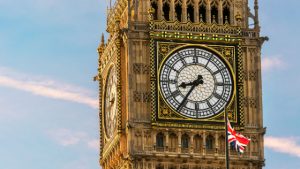
If you eat in a restaurant in the US, the waiter is likely to be somewhat aggrieved if you fail to leave a tip, in contrast, if you try to leave a tip in Japan it probably won’t be accepted. The rules of engagement for the same interaction are different within different societies. A surprising amount of human behaviour is culturally conditioned, and our expectations about what is normal or acceptable depend upon what we observe from the people around us. The rules which govern our lives are determined by our immediate environment, and at least some of these remain unspoken, unless and until they are transgressed.
Exactly the same principle applies to constitutional systems. That might seem counter intuitive at first, given that many people tend to imagine “law” as a set of rules, and suppose that Constitutional Law must be especially formal, given that it determines how an entire nation State is run. Nevertheless, the truth is far more nuanced than this: a Constitution is something wider and deeper than its legal parts, and can only really be understood in the context of “Constitutional Culture”, a label which encompasses all of the norms and expectations of collective life. Some of these, of course, are enforceable by the police or through the courts, and can helpfully be termed “Intra-Legal” in nature, but in contrast, other elements are not legal in this sense, although none the less constrain and compel certain actions. These non-legal parts of Constitutional Culture can be classed as “Extra-Legal”, bu it should never be assumed that they can be lightly dismissed.
Sometimes, if constitutional actors attempt to ignore aspects of Extra-Legal Constitutional Culture, they will be brought within Intra-Legal Culture. A good example of this arose with Miller II, and the Supreme Court ruling that a Prime Minister could not ask the Monarch to Prorogue Parliament as a means of preventing Parliament to fulfil its primary function and voting on a contentious issue. That had not been a matter of clear, hard law beforehand, but the judiciary rapidly decided that it was going to be when Boris Johnson put his hand into a previously uncontentious territory.
Another and much more common possibility, however, is that the Extra-Legal elements of Constitutional Culture remain Extra-Legal, and are enforced by social and political pressure. For instance, when MP Jo Cox was tragically murdered in the run up to the Brexit vote, both sides in the debate firmly shut down anyone who attempted to carrying on campaigning or arguing in the run up to her funeral, and there was a widespread consensus that this behaviour was simply not acceptable.
It must be highlighted that constitutional systems depend upon both Intra and Extra Legal elements, as both of them are part of the same framework. A useful image is perhaps that of a hard boiled egg, the intra-legal elements at the core of the Constitution are set with the yolk, but this is resting in the must larger egg-white of Extra-Legal norms and expectations. Each depends on the other and is mutually reinforcing.
Neither is all of this confined to the most visible and exalted level of national law. We can think of examples of Intra and Extra Legal Constitutional Culture in the running of the State, for example the principle of Parliamentary Sovereignty and constitutional conventions respectively, but it would be a huge mistake to image that they are confined to this realm. In reality, the Constitution touches every aspect of our lives, and as well as Intra and Extra-Legal elements of Constitutional Culture, or in other words, we have High and Low dimensions. High Constitutional Culture covers that kind of formal, top down processes which we classically think of when we begin to discuss Public Law, whereas Low Constitutional Culture addresses the State as citizens on the street experience it. How can you expect the police to deal with you if you are stopped for speeding? What are the mechanisms to complain if your child is permanently excluded from school, or a drug which you believe would benefit you isn’t available via the NHS?
For obvious reasons, even though High Constitutional Culture has more glamour, Low Constitutional Culture tends to get more days in court, attention in the popular press and outraged posts on social media. It is simply human nature to be more pro-active with the matters that affect us directly and personally. Also, once again the Intra and Extra Legal elements together determine our holistic experience, and probably our emotional response. So for instance, legal rules will determine whether there is a by-law forbidding the public consumption of alcohol in a park, but the extent to which this is enforced, and the manner in which the enforcement is carried out, are highly relevant to whether someone might decide to drink a sneaky can of something alcoholic whilst reading a book on a bench on a summer’s evening.
Ultimately, a Constitution (codified or otherwise) is something much more than letters on a page, it is a dynamic relationship between human beings. These richness and complexity explain why concepts like Intra and Extra Legal elements, and High and Low Constitutional Culture, are useful in exploring how that relationship operates, and the ways in which it might call for reform, criticism or even celebration. Undoubtedly, lawyers are not just concerned with rules, but with what rules mean for people.
Related Articles
What is culture? Live Science (13/7/17)
The Founders Lost World Law and Liberty (5/2/21)


